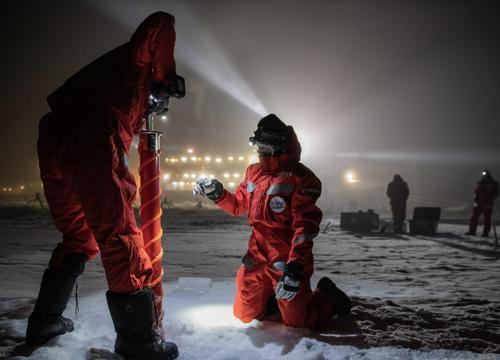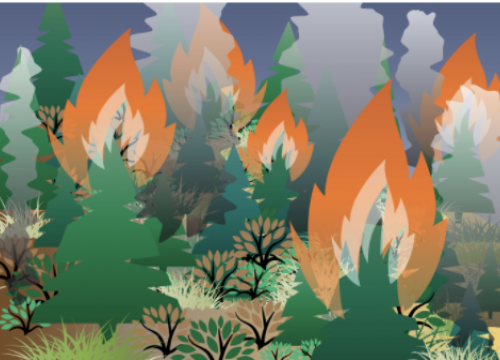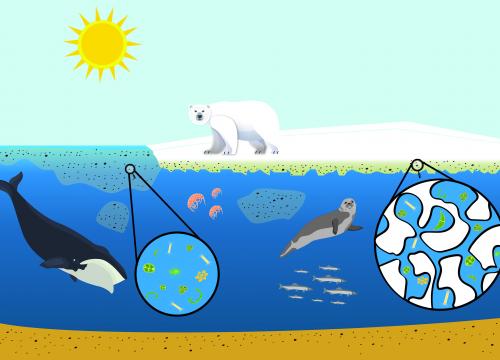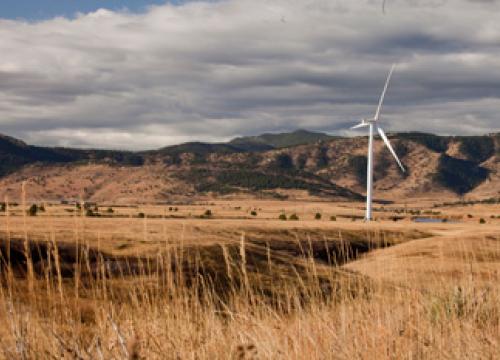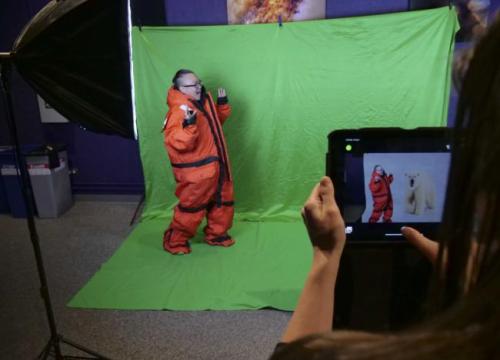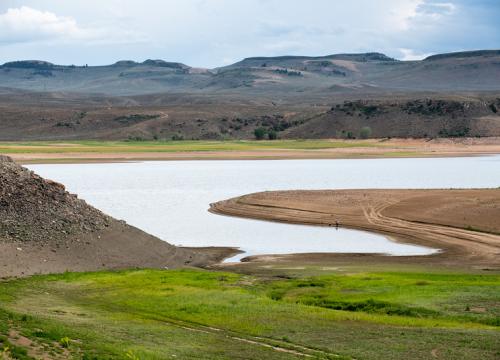Teaching Climate Science Principles: Wildfire
This resource features a sequence of CEEE lessons that use the phenomenon of drought to explore the question, "What are the local and national impacts of wildfire how do we build resiliency?"
Context for Use
Symptoms of climate change are all around us. Using local data and examples of wildfires is an effective way to teach that the impacts of climate change are affecting our communities now. Through this sequence of lessons, students will gain a deep understanding of how wildfires have had a profound effect on people and ecosystems.
The lesson 'Emotions Wheel' helps students identify and reflect upon their diverse emotions about climate topics such as wildfire. The role-playing 'Resilience Wildfire Game' and closure activity help students see themselves as citizens who can take positive actions in their community to reduce the impacts of wildfire, leaving students feeling inspired.
Additional strategies for teaching climate impacts the Spanish-language version of this Principle are found on the CLEAN website.
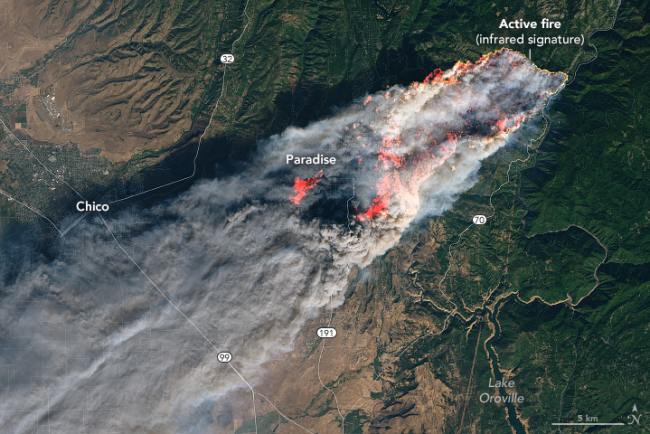
Satellite image of the 2018 Camp Fire in California.
Goals Header
Learning Goals
Essential Principle 7: Climate change will have consequences for the Earth system and human lives
Climate change, including increased heat, extended drought, and a thirsty atmosphere, has been a key driver in increasing the risk and extent of wildfires in the western United States during the last two decades. Wildfires require the alignment of a number of factors, including temperature, humidity, and the lack of moisture in fuels, such as trees, shrubs, grasses, and forest debris. All these factors have strong direct or indirect ties to climate variability and climate change.
Teaching Materials
Description
Full Wildfire Sequence
A full guide to navigating these lessons including transitioning between them.
Lesson 1 - The Emotion Wheels
Students identify, share, and reflect upon the range of emotions they have about climate topics such as wildfires.
Lesson 2 - Megafires: Rare Occurrences or the New Normal?
Students analyze and interpret data to evaluate how and why the number of megafires across the United States has changed over time.
Lesson 3 - Adapting to Extremes: Exploring the Science of Wildfire in Colorado
Students analyze wildfire data to identify patterns of wildfire history and risk in Colorado.
Lesson 4 - Wildfire Resilience Game
Students evaluate information on wildfire risk to appropriately use community resources to respond to a wildfire in their community by assessing the causes and effects of a wildfire occurring in their hometown.
Lesson 5 - Closure Activity
Students construct a social media post, including a photo and a short description to promote a wildfire resilience strategy you plan to implement in your community.

